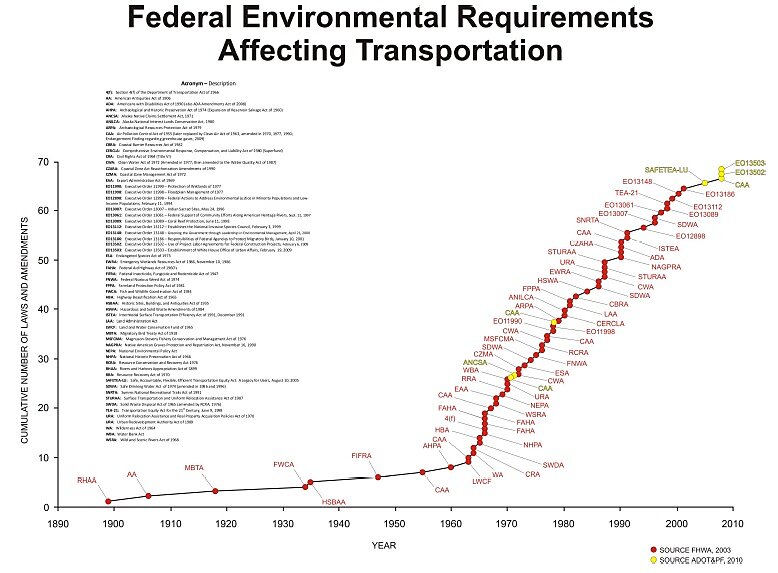As Obama administration officials head for the door at the Department of the Treasury, they have released a new study on infrastructure. The study—completed by outside consultants—profiles 40 large transportation and water projects that the authors believe would generate economic growth.
For each project, the study gives the estimated benefits, costs, and benefit-cost ratio. Many of the 40 projects appear to be worthwhile, such as an $8 billion Hampton Roads highway project with a benefit-cost ratio of 4.0. The report is silent on who should fund each project, but such high returns suggest that the states have a strong incentive to invest by themselves without aid from Washington.
What the states need from Washington is not money but to get out of the way. The Treasury report suggests that some “major challenges to completion” of projects are imposed by governments.
One challenge is “significantly increased capital costs:”
Capital costs of transportation and water infrastructure have increased much faster than the general rate of inflation over the past 20 years … Increased capital costs are also a product of enhanced design standards and regulatory requirements related to performance, safety, environmental protection, reliability, and resiliency.
Another challenge is “extended program and project review and permitting processes:”
Successful completion of the review and permitting processes required by the National Environmental Policy Act of 1969 (NEPA), which requires federal agencies to assess the environmental effects of their proposed actions, is an important part of project development. NEPA helps promote efforts to prevent or eliminate damage to the environment, but has also extended the schedule and generally increased the cost of implementing major infrastructure projects. This is a long-standing challenge that has spanned the last 20 to 30 years. Studies conducted for the Federal Highway Administration (FHWA) concluded that the average time to complete a NEPA study increased from 2.2 years in the 1970s, to 4.4 years in the 1980s, to 5.1 years in the 1995 to 2001 period, to 6.6 years in 2011.
Other FHWA data show that the number of environmental laws and executive orders creating barriers to transportation projects increased from 26 in 1970 to about 70 today, as shown in the chart below sourced from a trade association.
The upshot? The incoming Trump administration can spur infrastructure investment by working with Congress to repeal rules that unnecessarily delay projects and increase costs. Other steps include cutting the corporate tax rate to increase private investment and ending the bias against the private provision of facilities such as airports.
For more on infrastructure, see here, here, and here.

